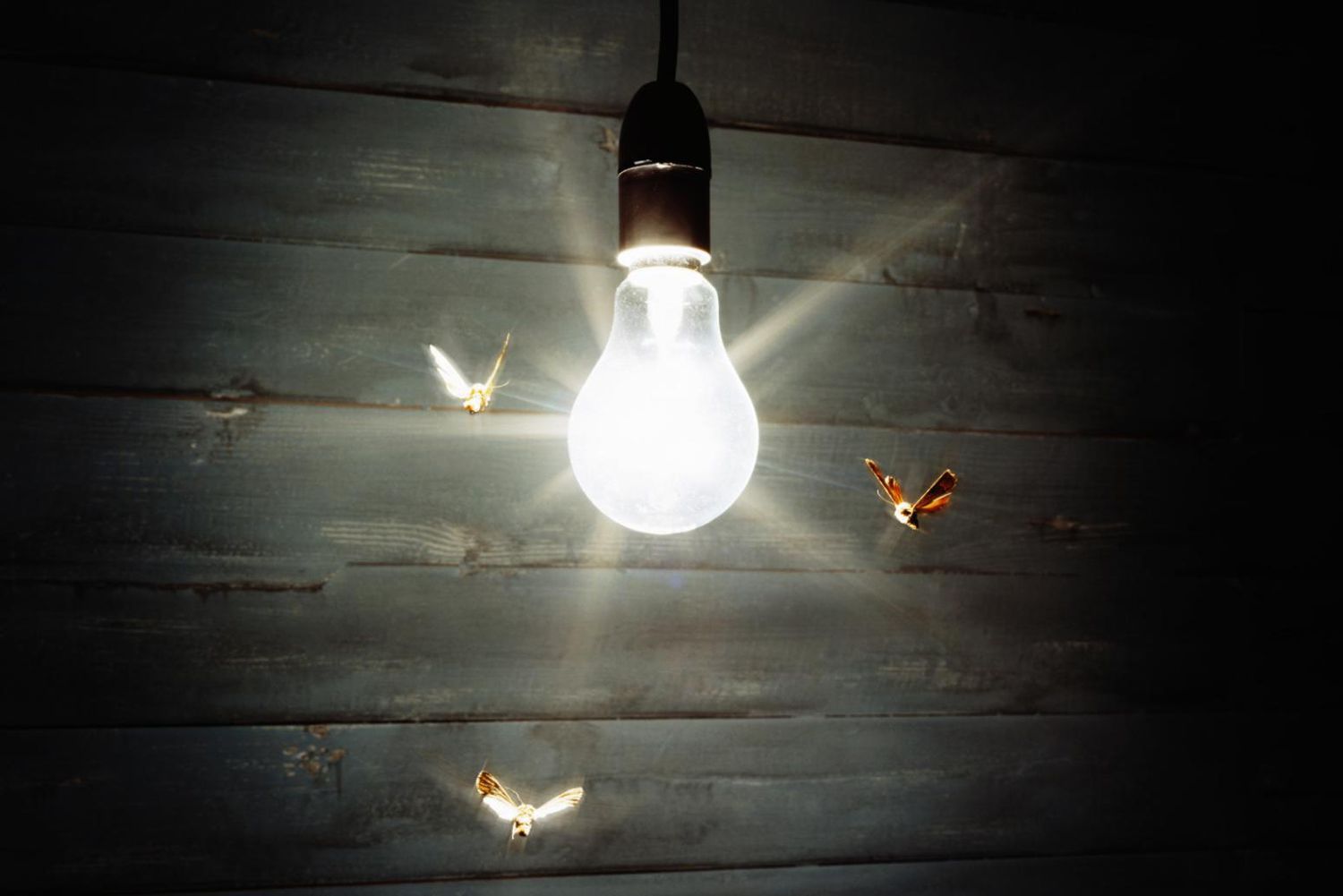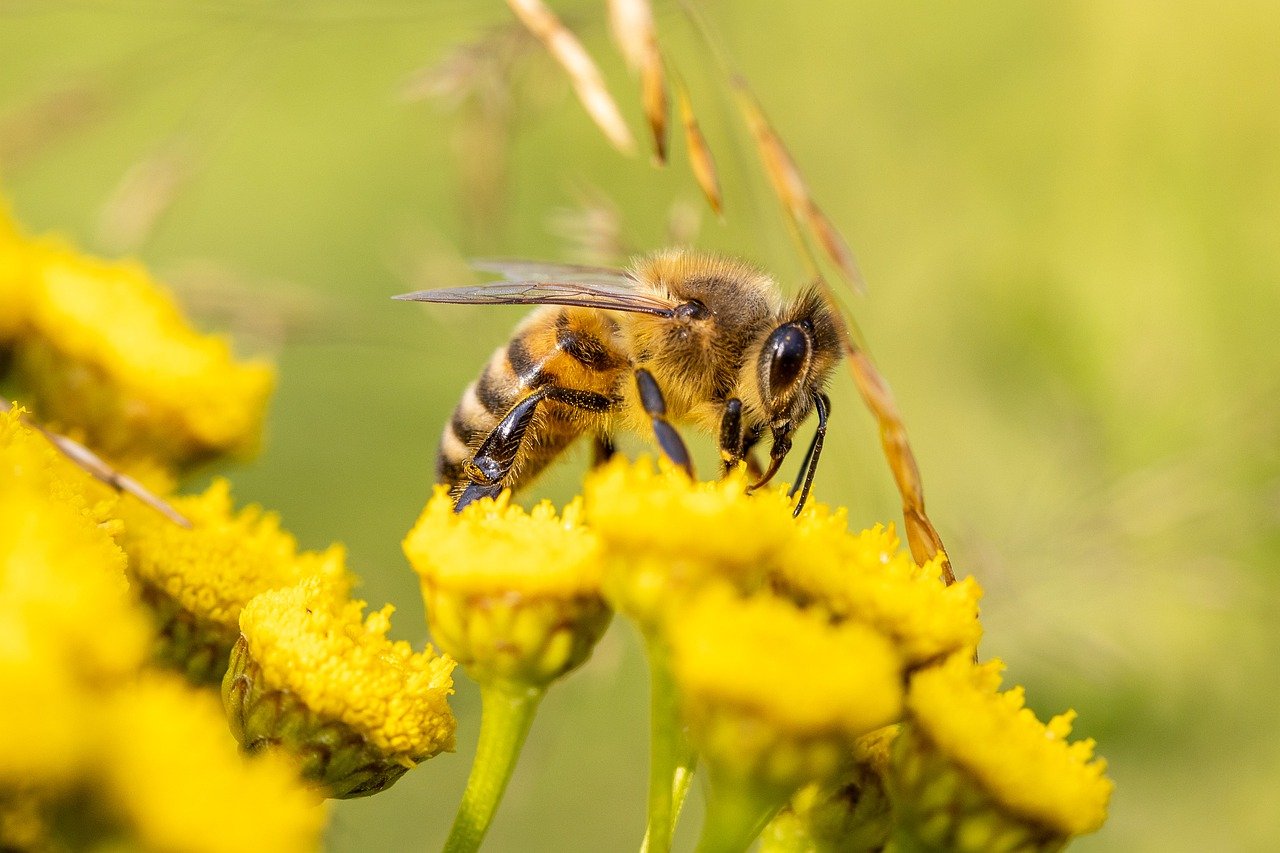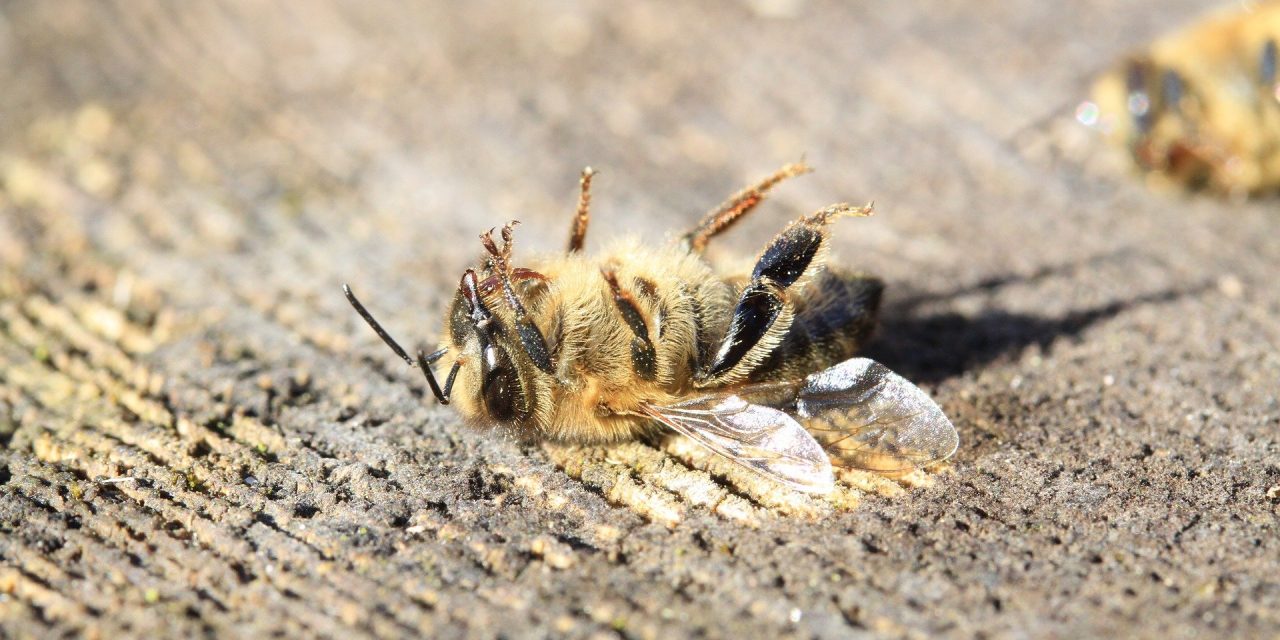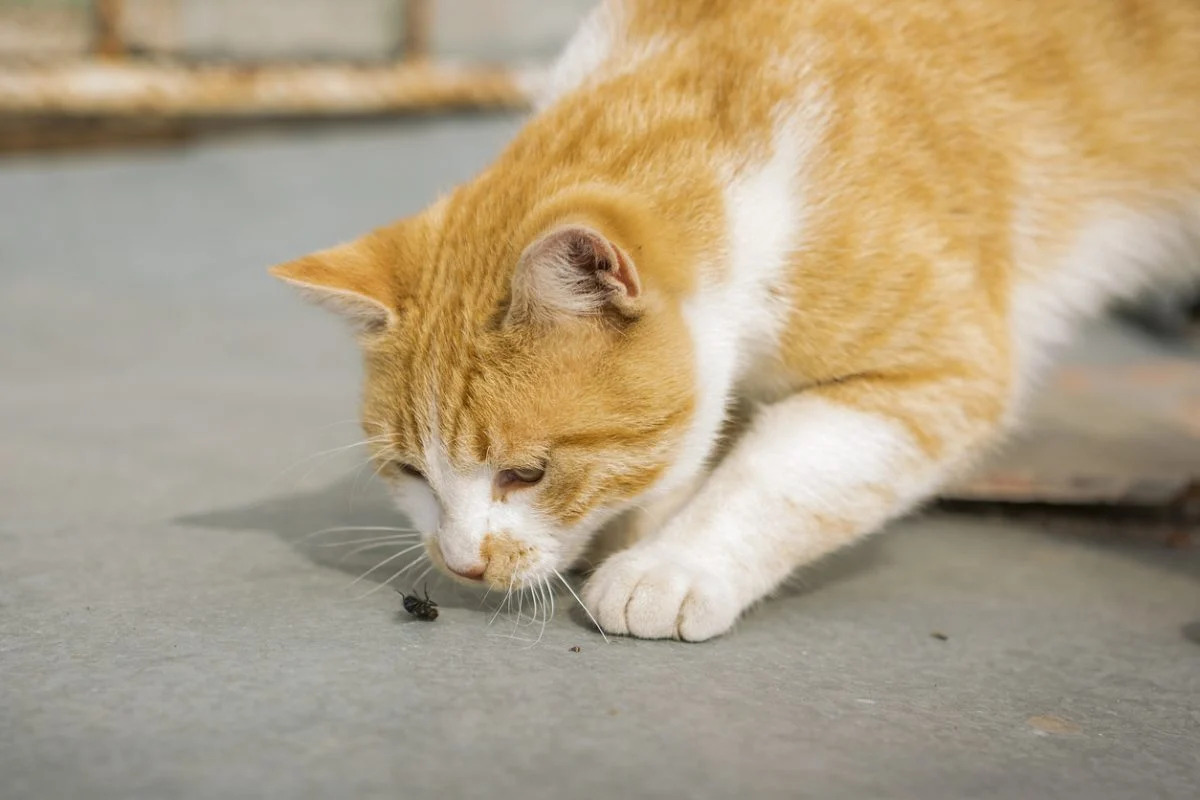Home>Gardening News and Trends>Latest News>Why Arent Spiders Insects


Latest News
Why Arent Spiders Insects
Modified: January 22, 2024
Stay updated with the latest news about why spiders aren't insects and unravel the fascinating world of arachnids.
(Many of the links in this article redirect to a specific reviewed product. Your purchase of these products through affiliate links helps to generate commission for Chicagolandgardening.com, at no extra cost. Learn more)
Table of Contents
Introduction
Welcome to the fascinating world of arthropods, where an incredible diversity of creatures exists. Insects and spiders are two prominent groups within the arthropod phylum, but they differ significantly from each other in numerous aspects.
Insects are commonly encountered in our everyday lives. They comprise the largest class of arthropods and are incredibly diverse, with over a million known species. From the delicate beauty of butterflies to the industriousness of ants, insects amaze us with their fascinating behaviors and unique adaptations. On the other hand, spiders, although often misunderstood and feared, are awe-inspiring in their own right.
Before we delve into the differences between insects and spiders, it’s important to understand their respective definitions and classifications. By examining their anatomy, reproduction, and behavior, we can gain a deeper appreciation for these magnificent creatures and the important roles they play in our ecosystems.
So, join us as we embark on a journey to uncover the distinctions between insects and spiders, shedding light on their intriguing characteristics and unraveling the mysteries that make them so captivating.
Definition of Insects
Insects are a diverse class of arthropods, belonging to the phylum Arthropoda and the class Insecta. They are characterized by their six jointed legs, three-part body (head, thorax, and abdomen), and often, a pair of wings. Insects inhabit virtually every corner of the Earth, adapting to a wide range of environments, from lush rainforests to arid deserts.
There are over a million known species of insects, making them the most abundant and diverse group of animals on the planet. They come in all shapes and sizes, from tiny beetles to large butterflies. Insects play a crucial role in various ecosystems as pollinators, decomposers, herbivores, and predators.
Their unique exoskeleton, made of chitin, provides support and protection for their soft bodies. This external skeleton doesn’t grow with the insect, so molting, or shedding of the old exoskeleton, is necessary for growth. Insects have specialized sensory organs, including compound eyes for vision and antennae for sensing their surroundings. Their mouthparts vary depending on their feeding habits, such as biting, chewing, sucking, or lapping.
Reproduction in insects is primarily sexual, with distinct male and female individuals. Most insects lay eggs, which then undergo metamorphosis – a transformation from egg to larva (caterpillar, grub, or maggot), pupa (cocoon or chrysalis), and finally, to the adult form. However, not all insects undergo complete metamorphosis; some exhibit incomplete metamorphosis, where the juveniles, called nymphs, resemble miniatures of the adults.
Insects are an essential component of ecosystems, playing vital roles as pollinators for flowering plants, decomposers that break down organic matter, and as a source of food for other animals. They are also economically significant, both as pests causing damage to crops and as beneficial insects in agriculture through pollination and biological control of pests.
Definition of Spiders
Spiders, classified under the order Araneae, are a group of arachnids distinct from insects. With their eight legs, two main body parts (cephalothorax and abdomen), and lack of wings and antennae, spiders have a unique and easily recognizable anatomical structure.
There are around 50,000 known species of spiders, each adapted to a particular habitat and lifestyle. They can be found in nearly every corner of the world, with the exception of Antarctica. Spiders exhibit a remarkable diversity in their size, ranging from tiny species that could fit on the tip of a finger to large tarantulas with leg spans of several inches.
One defining characteristic of spiders is their ability to produce silk, which is used for various purposes, including building webs, creating egg sacs, and wrapping prey. Silk is produced in specialized glands within the abdomen and can be incredibly strong and resilient.
Much like insects, spiders are predominantly carnivorous, preying on a wide range of small arthropods, insects, and other spiders. They immobilize their prey by injecting venom through their hollow fangs, paralyzing or killing their victims. Spiders then use their mouthparts to suck out the nutrients from the captured prey.
Unlike insects, however, spiders undergo a more direct form of development with few stages. After mating, female spiders either lay eggs in a protective silk sac or carry them on their bodies until they hatch. Spiderlings emerge from the eggs in a miniature version of the adults and go through multiple molts as they grow larger.
Spiders play crucial roles in controlling other arthropod populations, earning them the title of nature’s pest control experts. By preying on insects and other terrestrial arthropods, spiders help maintain balance within ecosystems and reduce potential crop damage.
While spiders are often portrayed as fearsome creatures, it is important to note that the majority of them are harmless to humans. In fact, many spiders serve as fascinating subjects for scientific study and contribute to our understanding of predatory behavior, arachnid anatomy, and the evolution of silk production.
Classification of Insects
The classification of insects is a complex and intricate field, as there are over a million known species with diverse characteristics. However, they can be broadly categorized into several groups based on their shared traits and evolutionary relationships.
The class Insecta is further divided into numerous orders, with some of the most well-known orders including beetles (Coleoptera), butterflies and moths (Lepidoptera), flies (Diptera), ants, bees, and wasps (Hymenoptera), and beetles (Coleoptera).
Each insect order has its own distinct features and behaviors. For example, beetles boast a hardened front pair of wings known as elytra, which protect their delicate hind wings. Butterflies and moths undergo complete metamorphosis, transforming from caterpillars to chrysalids before emerging as adult winged insects.
Within each order, insects are further classified into families, genera, and species. This hierarchical system helps in organizing and understanding the vast array of insect diversity.
Scientists classify insects based on various characteristics, including their physical traits, structural features, reproductive strategies, and ecological roles. These classifications provide valuable insights into the evolutionary history and relationships between different insect groups.
Research in insect classification is ongoing, with new species being discovered and added to the existing taxonomy. Advances in genetic analysis have also contributed to clarifying the evolutionary relationships and resolving previously unresolved classifications.
Understanding the classification of insects is fundamental for studying their biology, ecology, and interactions within ecosystems. It allows scientists to explore patterns in insect evolution, discover new species, and develop effective strategies for pest management and conservation efforts.
As our knowledge of insects continues to expand, so does our appreciation for the remarkable diversity and sheer wonder of these incredible creatures. From the smallest aphid to the largest beetle, each insect species plays a unique role in the intricate tapestry of life on Earth.
Classification of Spiders
Spiders are classified under the order Araneae, which is further divided into multiple families and genera. With around 50,000 known species, spiders exhibit a diverse array of characteristics and adaptations suited to their specific environments and lifestyles.
One of the major divisions within the order Araneae is between the suborders: Mesothelae, Mygalomorphae, and Araneomorphae.
The Mesothelae spiders are a small and ancient group characterized by their primitive features. They possess segmented abdomens, spinnerets located at the front of the abdomen, and lack the ability to produce venom. Mesothelae spiders reside primarily in Asia.
The Mygalomorphae spiders, often referred to as tarantulas, are characterized by their robust bodies, downward-pointing fangs, and the ability to produce urticating hairs. They are known for their impressive size and can be found in various regions across the world, including the Americas, Africa, and Asia.
The Araneomorphae spiders make up the majority of spider species. They are anatomically diverse, displaying a range of sizes, colors, and behaviors. Araneomorphae spiders have the ability to produce venom and erect orb-like webs for prey capture.
Within the Araneomorphae suborder, spiders are further classified into families based on shared characteristics. Some prominent spider families include Lycosidae (wolf spiders), Salticidae (jumping spiders), and Theridiidae (comb-footed spiders).
Modern advancements in genetics have greatly contributed to the classification of spiders. DNA analysis has provided insights into their evolutionary relationships and helped to identify new species and clarify previously unresolved taxonomic issues.
The classification of spiders is an ongoing field of study, with scientists continually discovering and describing new species. It is through these efforts that we deepen our understanding of spider diversity, biology, and ecological roles.
By classifying spiders, scientists can identify patterns in behavior and anatomy across different families and genera. This knowledge aids in conservation efforts, pest management strategies, and the exploration of spider evolutionary history.
Exploring the vast classification of spiders reveals the incredible adaptability and evolutionary success of these arachnids. From the elusive trapdoor spiders to the acrobatic jumping spiders, each species contributes to the complex web of life on Earth.
Difference in Anatomy
Insects and spiders have distinct anatomical features that set them apart from each other. These differences can be observed in their body structure, appendages, sensory organs, and reproductive systems.
When it comes to body structure, insects typically have a three-part body consisting of a head, thorax, and abdomen. The head houses their sensory organs, including antennae, compound eyes, and mouthparts. In contrast, spiders have a two-part body, known as the cephalothorax and abdomen, with the head and thorax fused together. They lack antennae but possess unique structures called chelicerae, which are used for feeding and manipulating prey.
Another key difference lies in their appendages. Insects have six legs attached to the thorax, enabling them to walk, climb, and jump. Some insects, like beetles, possess wings that allow them to fly. On the other hand, spiders have eight legs attached to their cephalothorax, which provide them with exceptional mobility and agility. Spiders do not have wings, but they are able to produce silk from specialized glands, enabling them to create elaborate webs and capture prey.
Distinct sensory organs also differentiate insects and spiders. Insects have compound eyes that are composed of multiple tiny optical units, granting them a wide field of vision. They also possess antennae that enable them to detect chemicals, vibrations, and movements in their environment. Spiders, in contrast, have simple eyes that provide them with limited vision. However, they compensate for this with highly sensitive hairs, or setae, located on their legs and abdomen.
Reproduction in insects and spiders also varies. Insects usually have separate sexes, with distinct male and female individuals. Many insects lay eggs, and some undergo metamorphosis as part of their life cycle. Butterflies, for example, undergo a complete metamorphosis from egg to larva (caterpillar), pupa (chrysalis), and adult butterfly. Spiders, on the other hand, have complex reproductive behaviors. Males produce specialized structures called pedipalps that transfer sperm to the female during mating. Female spiders produce egg sacs that contain hundreds of eggs, which are either hidden within the environment or guarded by the female.
Overall, the anatomy of insects and spiders showcases their remarkable adaptations to their respective environments and lifestyles. While insects excel in flight and have sophisticated sensory abilities, spiders possess extraordinary agility and silk production capabilities, allowing them to excel in prey capture and web construction.
Difference in Reproduction
Insects and spiders have distinct reproductive strategies, reflecting their diverse evolutionary adaptations. While both groups engage in sexual reproduction, there are notable differences in their mating behaviors, courtship rituals, and the methods by which they produce and care for their offspring.
Insects typically exhibit a wide range of mating behaviors, varying from simple encounters to elaborate courtship rituals. Male insects often engage in displays or behaviors to attract females. These displays can involve the production of pheromones, vocalizations, or intricate dances. Once a female is attracted, mating occurs, and fertilization takes place internally. In many insect species, the male has specialized copulatory structures, such as claspers or modified genitalia, to ensure successful transfer of sperm to the female.
After mating, the female insect lays eggs, either individually or in clusters. The eggs typically undergo embryonic development, hatching into larvae or nymphs. In some cases, insects may exhibit parental care, with the female safeguarding and providing food for the eggs or offspring. This care can involve guarding the eggs, constructing specialized structures for protection, or regurgitating food for the young to consume.
Spiders, on the other hand, have unique reproductive behaviors shaped by their specialized anatomical structures and life histories. Male spiders employ various tactics to court and secure a mate, ranging from intricate courtship dances to simple approaches. In many spider species, males produce silk that carries their sperm, which is then transferred to specialized structures, called palps, within the female during mating.
Following mating, female spiders have different methods of egg production and care. They either lay their eggs within silk sacs or attach them to a secure location within their environment. Some species construct elaborate, web-like structures to envelop and protect the egg sacs. The female often guards the eggs, providing protection against predators until they hatch.
Once the eggs hatch, spiderlings emerge, resembling miniature versions of the adults. Spiderlings may engage in dispersal behaviors, such as ballooning, where they use strands of silk to catch the wind and travel to new locations. Unlike insects, spiders do not undergo a distinct larval stage but rather develop through a series of molts, gradually increasing in size and maturity.
These differences in reproductive strategies between insects and spiders highlight the incredible diversity of approaches to reproduction in the animal kingdom. Insects exhibit a wide range of courtship behaviors and various forms of parental care, while spiders rely on unique anatomical structures and silk production for successful mating and offspring production. Each group’s reproductive adaptations have allowed them to thrive in their respective habitats and contribute to the ecological balance of their ecosystems.
Difference in Behavior
Insects and spiders display a wide range of behaviors, reflecting their diverse evolutionary adaptations and ecological roles. While both groups play important roles within ecosystems, there are notable differences in their foraging strategies, hunting techniques, and communication methods.
Insects exhibit a variety of foraging behaviors, ranging from herbivory to predation. Depending on their feeding habits, insects may be specialized feeders, targeting specific plant species or parts, or generalists, consuming a wide range of food sources. Some insects, like bees and ants, engage in cooperative foraging, where individuals work together to locate and gather food resources.
Spiders, on the other hand, are primarily carnivorous. They employ different hunting techniques to capture their prey. Some spiders, like orb-weavers, construct intricate webs to ensnare flying insects. They patiently wait for vibrations on the web that indicate prey has become trapped, and then quickly immobilize and consume it. Other spiders, such as wolf spiders and jumping spiders, rely on their excellent visual acuity and agility to actively chase and capture their prey.
Communication methods also differ between insects and spiders. Many insects use chemical signals, known as pheromones, to communicate with others of the same species. Pheromones can be used to attract mates, mark territories, or signal danger. Additionally, some insects employ visual and auditory cues, such as colorful displays or vibrational signals, for communication purposes.
Spiders, however, generally rely more on tactile and vibrational communication. Males may use specialized leg tapping or stridulation to send courtship signals to females. In social spider species, individuals may interact and communicate through physical contact and chemical signals.
Another notable difference in behavior is the level of sociality within each group. While some insects, such as bees and termites, have highly complex social structures with caste systems and cooperative brood care, most insects are solitary or have limited social interactions. They may come together temporarily for mating or food resources, but tend to lead independent lives.
Spiders, on the other hand, are generally solitary creatures, although a few species exhibit communal or social behaviors. Social spiders, such as certain species of Anelosimus, live in colonies and share common webs. They cooperatively capture prey and care for their young, exhibiting a level of social interaction not typically seen in insects.
These differences in behavior between insects and spiders highlight the remarkable adaptations and strategies that have evolved in response to varied ecological niches and environmental pressures. While insects utilize diverse foraging techniques and employ chemical and visual communication, spiders excel in their hunting abilities and may exhibit unique social behaviors in specific species. Together, they contribute to the intricate web of life, shaping ecosystems and maintaining balance within the natural world.
Ecological Roles of Insects
Insects play vital roles in ecosystems, exhibiting diverse ecological functions that have a profound impact on the environment and other organisms. Their ecological contributions extend across various dimensions, including pollination, decomposition, nutrient cycling, and serving as a critical food source.
One of the most crucial ecological roles of insects is pollination. As they visit flowers in search of nectar or pollen, insects inadvertently transfer pollen from the male reproductive parts of flowers to the female reproductive parts, facilitating plant reproduction. This process is essential for the fertilization and production of fruits, seeds, and the subsequent generation of new plants. Bees, butterflies, moths, beetles, and flies are among the key pollinators, ensuring the survival and genetic diversity of countless plant species.
Insects are also vital in the decomposition of organic matter. Species such as beetles, flies, and ants play integral roles as decomposers, breaking down dead plants and animals into simpler compounds. This process releases nutrients back into the soil, facilitating nutrient cycling and making them available for other organisms, including plants. Insects are highly efficient in nutrient decomposition, aiding in the recycling of vital elements and contributing to the overall health of ecosystems.
Additionally, insects serve as a substantial food source for numerous animals. They form the foundation of food chains, being consumed by birds, reptiles, amphibians, mammals, and other invertebrates. Predatory insects, such as dragonflies and praying mantises, help control populations of other invertebrates, contributing to overall ecosystem balance. Insects also act as important prey for many insectivorous bird species, supporting their reproduction, migration, and survival.
Furthermore, certain insects play essential roles in biological control. For instance, parasitic wasps and predatory insects, like lady beetles and lacewings, help regulate populations of pest species by preying on them. This natural form of pest control can reduce the need for chemical pesticides, promoting sustainable agriculture and minimizing environmental damage.
Moreover, insects contribute to ecosystem health through their interactions with plants and soil. Some species, such as termites and ants, help aerate and mix soil, improving its fertility and structure. Burrowing insects increase water infiltration, allowing for better moisture retention in the soil. Bees and other pollinators contribute to plant diversity and habitat formation, supporting the stability and resilience of ecosystems.
The ecological roles of insects extend far beyond their sheer abundance and diversity. From pollination to decomposition, nutrient cycling, and pest control, insects are fundamental contributors to the functioning and balance of ecosystems. Recognizing and understanding the importance of insects in ecological processes is crucial for promoting biodiversity conservation and maintaining the health and sustainability of our planet.
Ecological Roles of Spiders
Spiders play important ecological roles in various ecosystems, showcasing their significance in maintaining ecological balance and controlling populations of other arthropods. Despite their often-misunderstood nature, spiders contribute in crucial ways to diverse ecological functions, such as pest control, maintaining biodiversity, and serving as a food source for other organisms.
One of the primary ecological roles of spiders is pest control. As natural predators of insects and other arthropods, spiders help regulate populations of potential agricultural pests and disease vectors. By actively hunting or constructing intricate webs to capture prey, spiders help prevent the overabundance of certain pest species. Their efficient predation can reduce the need for chemical pesticides, promoting more sustainable and environmentally friendly approaches to pest management.
Another significant ecological contribution of spiders is their role in maintaining biodiversity. They form an integral part of the intricate food webs that exist within ecosystems. Spiders occupy various trophic levels, serving as predators of insects and other smaller invertebrates, while also being an essential prey source for other predators. Their presence ensures a balanced and diverse community of organisms, contributing to the stability and resilience of ecosystems.
Spiders also play a role in nutrient cycling and decomposition. Some species are decomposers, breaking down organic matter and contributing to the recycling of nutrients back into the soil. Their feeding activities help facilitate the decomposition process, releasing essential elements for plant growth and supporting nutrient cycling within ecosystems.
The presence and diversity of spiders can also provide valuable information about the health and stability of ecosystems. The abundance and composition of spider communities can serve as bioindicators, reflecting the overall ecological quality of an ecosystem. Changes in spider populations and diversity can indicate shifts in environmental conditions or the presence of disturbances, providing important insights for conservation and management efforts.
Moreover, spiders serve as a crucial food source for other organisms. They are a common prey item for a variety of predators such as birds, reptiles, amphibians, and other invertebrates. The consumption of spiders contributes to the energy flow and trophic interactions within ecosystems, supporting the survival and reproduction of the organisms that rely on them as a food source.
While often feared or overlooked, spiders play an essential role in maintaining ecological balance and functioning within ecosystems. Through their predation on pests, contribution to nutrient cycling, support of biodiversity, and role as a food source, spiders demonstrate their ecological importance and their place in the complex web of life on Earth.
Conclusion
Insects and spiders, as two prominent groups within the arthropod phylum, exhibit fascinating differences in their anatomy, reproduction, behavior, and ecological roles. Insects, with their six legs, diverse mouthparts, and ability to fly, excel in pollination, decomposition, and serving as a crucial food source for other organisms. Spiders, with their eight legs, unique hunting techniques, and silk production capabilities, contribute to pest control, biodiversity maintenance, and nutrient cycling.
Understanding the distinctions between insects and spiders allows us to appreciate the incredible diversity of life on Earth and the important roles these creatures play within ecosystems. While insects dominate in numbers and occupy various ecological niches through their diverse adaptations, spiders captivate with their predatory prowess and ability to control insect populations.
Both insects and spiders showcase unique evolutionary strategies and behaviors that have allowed them to successfully occupy diverse habitats across the globe. Insects, with their intricate metamorphosis, elaborate communication methods, and intricate networks of ecological interactions, have garnered great fascination and admiration. Spiders, with their varied hunting techniques, silk production skills, and occasional social behaviors, challenge common misconceptions and inspire awe in their often-misunderstood nature.
Appreciating the roles of insects and spiders in ecosystems is crucial for sustaining biodiversity, promoting ecological balance, and informing conservation efforts. From providing invaluable ecosystem services such as pollination and pest control to serving as a vital food source for other organisms, both groups are integral to maintaining the health and functioning of our natural world.
As we continue to explore the intricate complexities of the insect and spider kingdoms, let us embrace the awe-inspiring diversity that they offer. By understanding and preserving their habitats, we ensure the continued existence of these remarkable creatures that contribute so greatly to the ecological tapestry of our planet.






